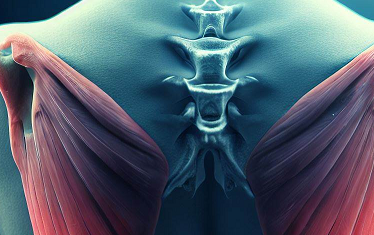Scapular winging is the irregular movement and position of the shoulder blade. It can be caused by multiple factors and may affect people of all ages. Medial and lateral scapular winging are two distinct forms of scapular winging with unique characteristics and underlying causes.
Scapula, or shoulder blade, is a triangular bone in the upper back. It helps stabilize the shoulder joint. Scapular winging, on the other hand, is a condition when the scapula is positioned abnormally.
Anatomy of the Scapula
Scapular winging requires a basic understanding of scapula anatomy. The scapula has multiple bony landmarks, such as the acromion, coracoid process, and spine. It is also connected to a number of muscles and ligaments, which enable for its mobility and stability.

What is Scapular Winging?
Scapular winging is the term for the abnormal prominence or protrusion of the scapula brought on by the failure of the muscles that regulate its movement. There are two major varieties of it: medial and lateral winging. It can happen in different orientations.
Medial Scapular Winging
The inward or medial displacement of the scapula is the defining feature of medial scapular winging. In this condition, the scapula's inferior angle protrudes noticeably toward the spine, resembling a wing.
The serratus anterior muscle, which controls stabilizing and protracting the scapula, is prone to weakening or paralysis, which is a common cause of medial scapular winging. This muscular dysfunction may result from nerve damage such long thoracic nerve palsy.
Lateral Scapular Winging
The term "lateral scapular winging" describes the scapula's outward or lateral displacement. The scapula's superior angle protrudes away from the spine in this condition, like a wing.
The trapezius muscle, which retracts and elevates the scapula, is the primary contributor to lateral scapular winging and is often dysfunctional or weak. The emergence of lateral scapular winging can be attributed to muscular imbalances, nerve damage, or injuries to the trapezius muscle.
Medial vs Lateral Scapular Winging
The muscles involved and the direction of scapular displacement differ between medial and lateral scapular winging. An inward protrusion of the scapula is caused by medial scapular winging, which involves the serratus anterior muscle. On the other side, lateral scapular winging involves the trapezius muscle and results in the scapula protruding outward.
Conclusion
Medial and lateral scapular winging are two different conditions that impact the location and mobility of the scapula. Understanding the differences between these conditions is essential for proper diagnosis and treatment. A healthcare practitioner should be consulted if you suspect scapular winging for a thorough assessment and individualized treatment strategy.








0 Comments